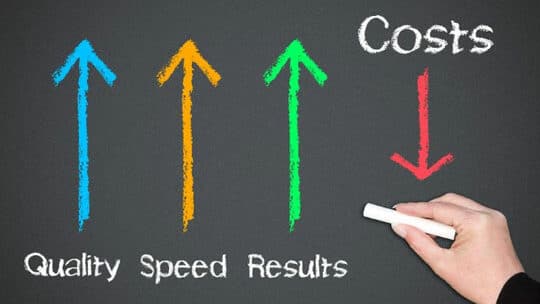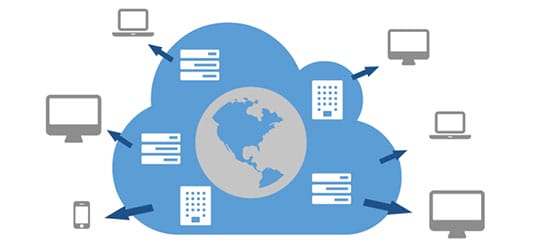In today’s fast-paced world, we want information in the blink of an eye. Patience is a rapidly diminishing virtue, and as such, people expect websites to load incredibly quickly. If your business’ website is slow, it can negatively affect user experience in a significant way. Inferior website speed can also tank your search engine rankings and, ultimately, your bottom line.
First impressions matter and we all make snap judgments, whether we like to admit it or not. Did you know it takes as little as 0.05 seconds for users to make an opinion about your website? This decision will determine whether that person stays and potentially buys something from your business, or simply leaves, leaving you with nothing other than a worsened bounce rate. And if your website takes too long to load – well, your time is up. They’re already clicking onto a competitor, meaning that all your carefully-worded content that has boosted your rankings is ultimately pointless.
Let’s look into this a little further – why is site speed so important? More importantly, what can we do to speed up our website in 2025?
The importance of website speed

Website speed isn’t just a matter of convenience, it’s the key to maintaining customer loyalty and reaping all digital business rewards. When website speeds are slow, visitors don’t stick around – resulting in missed opportunities for your business.
But when do fast loading times become the norm on your site? You can count on improved user experiences and greater growth potential! Don’t let precious seconds slip away; invest in website speed today for future success tomorrow. Here are some of the reasons why website speed is important:
Recommended for you: WordPress Speed Optimization: How to Accelerate your WordPress Website?
1. User experience
Site speed is hugely important to the user experience. Users expect websites to load quickly these days. If a website takes too long to load (and this really only needs to be a few seconds!), users may become frustrated and leave the site. A slow website can lead to a poor user experience, and users are less likely to return to a website that takes too long to load. Internet speed is increasing all the time, and as such, we expect websites to load in the blink of an eye. What’s more, people might take a laggy website as a reflection of your business’s overall efficiency and professionalism.
2. Search engine rankings
Site speed is also an essential factor for search engine rankings. Search engines like Google prioritize websites that load quickly because they want to provide the best possible experience for their users. A website that loads slowly may be penalized by search engines, resulting in a lower ranking in search results. After all, why would Google put a website front-and-center if people only ever navigate away to click through to another domain?
3. Conversions
Unsurprisingly, site speed can also impact a website’s conversion rate. Users are more likely to complete a purchase or sign up for a service if the website loads quickly. If a website takes too long to load, users may lose patience and abandon their purchase or sign-up process. In fact, they’re likely to jump ship long before they even get to the point where they consider purchasing in the first place.
4. Mobile optimization
Mobile users don’t hang around if a website is laggy or slow to respond. With more and more users accessing websites on mobile devices (nearly 61% of all web traffic comes from people using mobile devices as of March 2023), it’s essential you optimize site speed for mobile users.
A few statistics about website speed

Are you hungry for a few figures? We don’t blame you – we have three statistics about site speed that really hammer home the importance of site speed, and why it is something you should be addressing now:
- Studies and surveys have shown that even a one-second delay in page load time can lead to an 11% decrease in page views, as well as a 16% decrease in customer satisfaction. Given the difficult economic time we find ourselves in 2025, anything we can do to increase customer satisfaction and therefore, our odds of converting, is a wise move.
- 47% of web users expect a webpage to load within 2 seconds or less. This really isn’t unreasonable when you think about it. Despite this, many websites are falling short. Studies show that the average load time for a web page is 3.21 seconds.
- Lastly, 79% of web shoppers who experience the frustration of slow-loading pages are less likely to buy from the same site again.
Now we know more about how crucial a snappy website is for traffic, conversions, and bounce rate, let’s check out ways to speed up your site.
How to speed up your website in 2025?

SEO best practice changes all the time, with each algorithm. Keeping up with the latest SEO trends and recommendations feels like a full-time job, but thankfully, we’ve compiled and culminated the top tips for 2025 on how to speed up and optimize your website.
1. Optimize images
Images often make up the largest portion of a website’s file size, therefore, optimizing your images is a massive step in improving your website’s load time, leading to significant gains in site speed. The smaller your image size, the less time it takes them to load on a page. You can use tools such as Photoshop, and GIMP or online tools such as TinyPNG or Compressor.io to optimize your images. If you have a WordPress CMS (Content Management System), there are many plugins available (free of charge) that will optimize your images and free up room on your website.
2. Minimize HTTP requests
The more HTTP requests a website makes, the slower it loads. To speed up your website, you can combine multiple files (such as CSS and JavaScript) into a single file – this works to reduce the number of overall HTTP requests. There are a number of guides online outlining how to go about combining multiple files in this way, although if this area is something that you find complicated and overwhelming, it’s best to get outside assistance to ensure nothing goes wrong.
You may like: How to Increase Magento Performance & Speed?
3. Use a content delivery network (CDN)
CDNs were born decades ago, in 1998. They were designed to speed up web content. Essentially, a CDN network is an invaluable asset for delivering website content to users around the world. By strategically distributing network servers geographically, page load times are drastically improved – greatly enhancing user experience. Furthermore, this innovative technology can provide scalability benefits and reduce bandwidth costs while increasing the reliability of websites worldwide.

To use a CDN, you generally follow these steps:
Step 1: Choose a CDN provider
With the array of CDN providers available, it can be tricky to pick which is right for you. Important factors to consider when making your decision include pricing plans, features offered, and server locations. All these pieces of information are easy enough to access online! Finding a service tailored to your specific needs will ensure maximum efficiency with minimal effort. If you ask us, we will recommend StackPath CDN, the most reliable and easy-to-use solution.
Step 2: Integrate the CDN with your website
To ensure that your CDN is synced with your website, you may need to adjust certain DNS settings depending on the provider. Don’t stress if this seems daunting – it’s not as difficult as it looks. Instructions will be provided by the CDN service for assistance along each step of the way.
Step 3: Cache your content
Leveraging a content delivery network for your website can unlock speed and performance benefits. By configuring the CDN to cache static assets such as images, videos, and scripts you will be able to offload a significant load from your origin server – ultimately resulting in an improved user experience.
Step 4: Configure delivery settings
Configuring your CDN gives you the power to customize content delivery. From compressing and encrypting data for additional security to optimizing performance through caching tailored specifically to your needs. Plus with geo-targeted rules specifying where in the world different users will access files from, ensuring speedy service is just an adjustment away!
Step 5: Monitor performance
Monitor the CDN performance using analytics and monitoring tools provided by the CDN provider. This can help you optimize the CDN settings to ensure the best possible performance for your website.
4. Evaluate your web hosting provider
If you are still running your website on a shared hosting provider where resources are limited, switching over to a Virtual Private Server (VPS) or dedicated server may yield better performance results.
VPS is a type of web hosting where a physical server is divided into a number of virtual servers. Each of these servers runs its own operating system and can, therefore, be independently configured and managed. The main benefits of using a VPS are greater control and flexibility (root access to your server), improved performance and reliability (dedicated resources which can improve website performance), scalability, security, and cost-effectiveness.

5. Reduce server response time
Server response time is an obvious element to consider when it comes to speeding up your website! But what can you do about it? Practically speaking, you can upgrade your hosting plan, or you might want to consider changing your CMS to one that is optimized for speed.
6. Enable browser caching
When a user visits your website, their browser downloads all the files required to display your website. Enabling browser caching allows the browser to store these files on the user’s computer, reducing the load time for subsequent visits.
7. Optimize above-the-fold content
Above-the-fold content appears on the screen before the user scrolls down. Optimizing this content can significantly improve your website’s load time. You can achieve this by prioritizing the loading of important resources such as fonts and images.
8. Use image sprites
Replacing multiple images with one master file that contains all the images can help reduce HTTP requests and load time.
9. Hire an SEO agency
If this all sounds overwhelming, you’re certainly not alone. Many businesses suffer less than favorable site speeds because they don’t have the time or experience to optimize their websites. After all, they have businesses to run, and they need to look after their bottom lines.
However, SEO agencies are well-equipped and able to look at all elements of your website that may be causing problems – they can then suggest solutions and help to turn your site speed around, ultimately encouraging valuable traffic to your business. They can also work with you to set, and hit, other SEO KPIs that will drastically improve the health and visibility of your website.
You may also like: 10 Fast & Easy Ways to Speed Up Joomla Website.
Final words

The speed of your website can significantly impact your user experience and business goals. These pro tips will improve your website’s load time, keep users engaged and, ultimately, help you to grow your business into 2025 and beyond.





